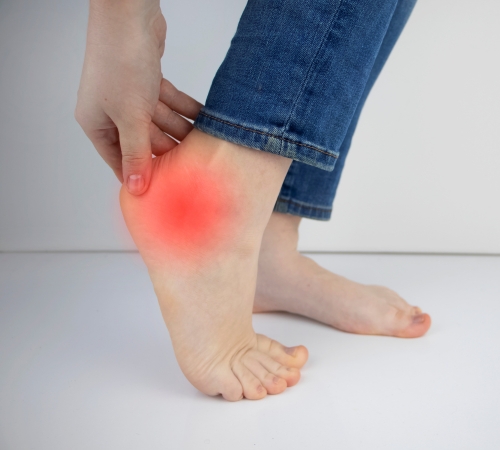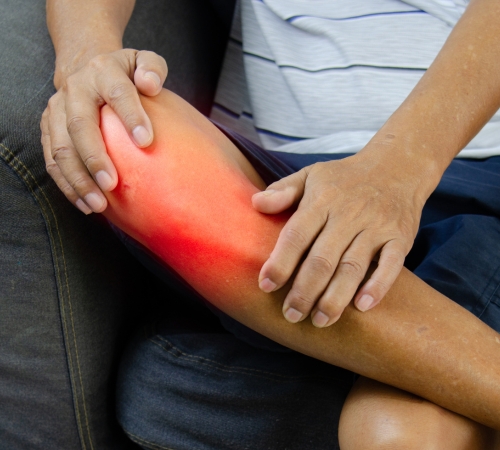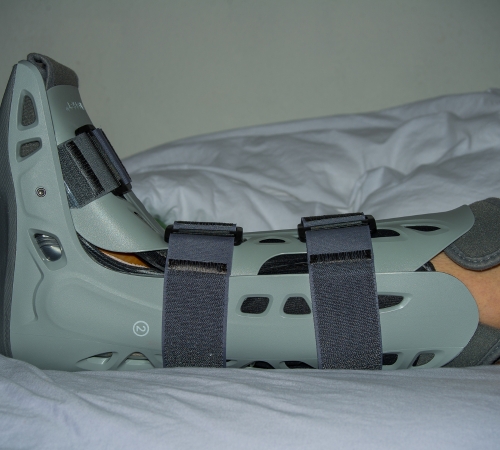
Advanced Foot and Ankle Surgery Tailored to Your Condition
Foot and ankle problems can interrupt everything—from how you move to how you live. At Dr. Meet Mehta’s Clinic in Ahmedabad, we know that pain in these joints isn’t just uncomfortable—it can stop you from doing the things you need and love.
Whether it’s a fracture, chronic ankle pain, or long-term issues, we focus on treatments that actually solve the problem, not just mask it. Our team is experienced in advanced procedures like arthroscopy and joint reconstruction. Whether you need a straightforward surgery or a more complex intervention, we tailor the care to your condition and lifestyle.
This isn’t about quick fixes. It’s about expert care, tailored treatment, and a clear path to lasting recovery. Because healing isn’t just about the procedure, it’s about getting your life back, fully and confidently. Book your consultation with Dr. Meet Mehta and take the first real step toward walking pain-free again.


Why Patients Trust Dr. Meet Mehta for Foot and Ankle Care
MBBS | MS Ortho | FASM Arthroscopy Surgeon | Joint Preservation & Sports Medicine Specialist
Dr. Meet Mehta envisioned more than just an orthopaedic clinic, he built a centre for advanced, patient-first care in Ahmedabad. Known for his proficiency in minimally invasive operations and pain-free treatment methods, Dr. Mehta swiftly developed a reputation as one of the city’s most trusted orthopaedic doctors.
What sets him apart isn’t just his surgical skill, it’s how he approaches every case. His treatment programs are based on an in-depth diagnostic and are meticulously adjusted to each patient’s specific needs. From your first consultation to post-surgical recovery, every step is clearly communicated, thoughtfully planned, and handled with care.
If you’re dealing with persistent foot or ankle pain, you’re not just looking for a doctor, you’re looking for someone who listens, explains, and treats with intention. That’s exactly what you’ll find with Dr. Meet Mehta. Book your appointment and start your recovery with confidence.
Why Choose Us for Foot and Ankle Surgery and Specialized Care
Foot and ankle conditions require more than general care—they need experienced hands and precise treatment. Our team specialises in managing everything from fractures and tendon injuries to chronic pain, using evidence-based techniques and the latest medical tools like arthroscopy to improve outcomes with less downtime.
We also understand that not every case needs surgery. That’s why we offer a full range of non-surgical and minimally invasive treatments tailored to your condition. With clear communication, transparent pricing, and a supportive approach throughout, we make sure your focus stays on recovery—not on navigating confusing care or unexpected costs.
How Do the Foot & Ankle Work: Understanding the Anatomy
You might not realise it, but your foot and ankle form one of the most complex and hardworking structures in your body. Whether you’re walking, running, or balancing, the coordination between these two joints plays a vital role. They carry your entire body weight, support your posture, and help stabilise your upper body. The ankle joint is formed where the tibia and fibula bones connect with the talus bone in the foot. The foot itself contains 26 bones, with the most important ones being the tarsals, metatarsals, and phalanges. But bones are just part of the story. For this structure to actually function, it depends on a network of muscles, ligaments, tendons, and cartilage. These work together to provide the flexibility, movement, and shock absorption your body needs every time you take a step.
Ligaments of the Foot & Ankle
Ligaments act like bands that hold two or more bones together. This connection gives the joint its structure, strength, and stabilisation to the structure. In the foot and ankle, there are many ligaments at work—but a few stand out for their importance. The key ones are the anterior talofibular, calcaneofibular, and deltoid ligaments. These are the primary stabilisers that keep the joint aligned and functioning properly.
Understanding Foot and Ankle Tendons
Pointing your toes, elevating your heel, or stabilising your arch require tendons to connect muscles to bones. For instance, the strongest tendon in your body, known as the Achilles tendon, allows you to walk, run, or jump. Without tendons, most of the movements you make throughout the day wouldn’t be possible.

What’s Causing Your Foot or Ankle Pain?
Some of the most commonly identified causes of foot and ankle pain are:
- Ankle Sprains or Strains
- Fractures (Foot or Ankle)
- Arthritis
- Tendon or Ligament Tear
- Plantar Fasciitis
- Achilles Tendonitis
- Flat Feet or High Arches
How Foot and Ankle Structures Cause Pain
While these are the most common foot or ankle pain-causing conditions, the underlying reason usually comes down to an issue with one of the components of your foot or ankle. For instance, if a ligament gets accidentally torn, it can lead to intense pain and noticeable inflammation. Similarly, the tendons in your foot or ankle can either tear or become inflamed, often causing symptoms similar to a ligament injury.
Recognising the Symptoms and Risk Factors of Foot & Ankle Problems
What are the Symptoms of Foot & Ankle Issues
- Pain while walking or standing
- Swelling or inflammation around the joint
- Stiffness or reduced range of motion
- Bruising or tenderness
- Difficulty in bearing weight or walking normally
Common Risk Factors for Foot & Ankle Pain
- Spend long hours standing or walking—like teachers, retail workers, and nurses
- Wear poorly fitted or unsupportive footwear
- Play high-impact sports such as running, football, or basketball
- Have foot structure issues like flat feet, high arches, or abnormal gait
- Have a history of foot or ankle injuries or fractures
From Sprains to Surgery: Foot & Ankle Conditions
Explore the most common foot and ankle conditions—from minor sprains to serious injuries that may require surgery or advanced treatment.

How to Prevent Foot and Ankle Pain
- Wear well-cushioned footwear to reduce pressure on your foot and ankle joints.
- Do daily stretches and strengthening exercises to improve joint stability.
- Maintain a healthy body weight to avoid excess strain on your feet and ankles.
- Avoid walking or running on uneven surfaces to prevent sprains or falls.
- Warm up properly before playing sports or performing high-impact activities.
- Don’t ignore recurring pain or swelling. Get timely foot treatment to prevent complications.
For expert care and advanced foot and ankle surgery in Ahmedabad, book an appointment with Dr. Meet Mehta today.
Non-Surgical to Surgical Foot & Ankle Treatments in Ahmedabad
Every foot or ankle condition is different, and so is the treatment it may require. Depending on your diagnosis, options may range from conservative therapies to advanced surgeries.
Hear From Our Patients – Testimonials
Frequently Asked Questions About Foot & Ankle Treatment
Sports Injury and Orthopaedic Super Speciality Center
Book Consultation
Monday – Saturday 06:00 PM – 08:00 PM

Stay Updated with the Latest Blogs
 Jul 28 2025
Jul 28 2025
 Jul 28 2025
Jul 28 2025
 Jul 28 2025
Jul 28 2025

















